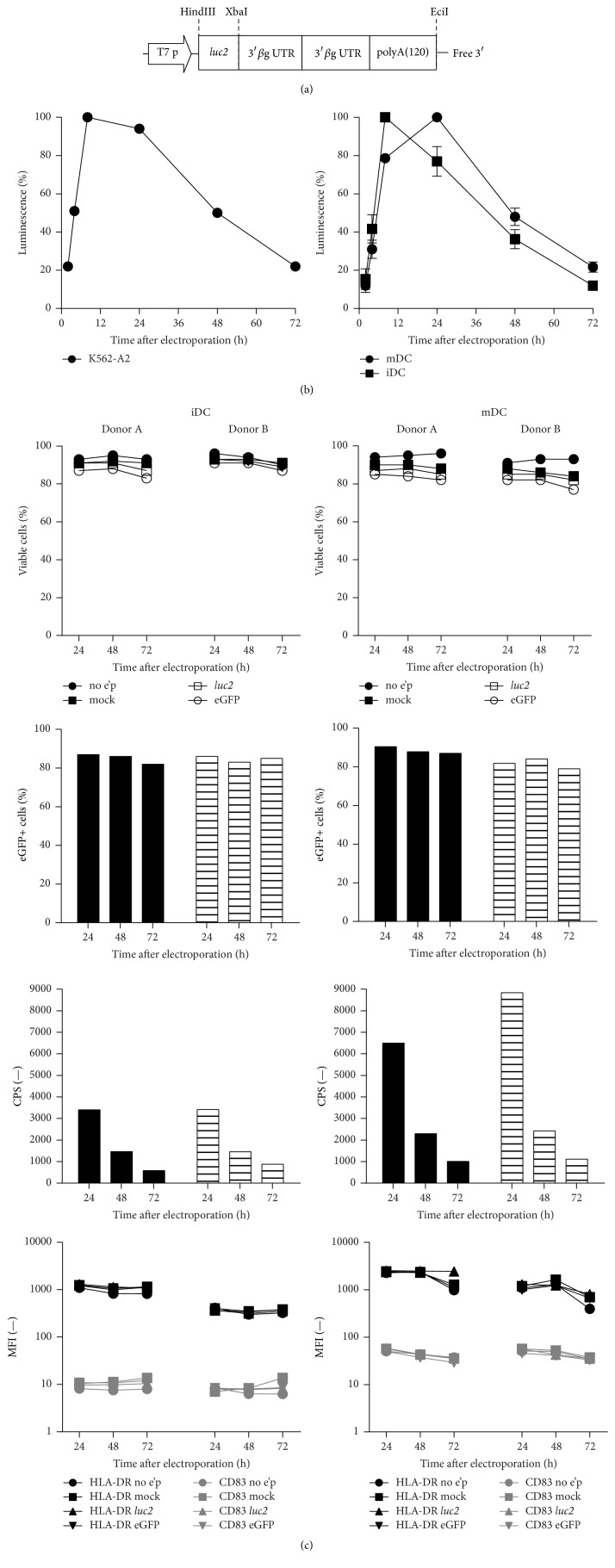Figure 1.
Electroporation of firefly luciferase IVT RNA into DCs and K562-A2 cells is nontoxic and leads to strong and long-lasting gene expression without affecting target cell phenotype. (a) Optimised luc2 reporter vector: composed of a gene-optimized synthetic firefly luciferase reporter gene cloned in front of two human β-globin 3′ untranslated regions (UTRs) fused head to tail and an unmasked free poly(A) tail of 120 bp. (b) Kinetics of luc2 expression in K562-A2 cells (n = 1), human iDCs (n = 3), and mDCs (n = 3). Cells transfected with 8 pmol of luc2-encoding IVT RNA were harvested at different time points to measure luminescence from 1 × 104 cells (Bright-Glo Luciferase Assay Kit for 96-well plates (Promega)). Results are the mean ± SD luminescence. Percent luminescence is relative to the highest luminescence signal obtained in each experiment. (c) Viability, reporter gene expression of iDCs and mDCs after eGFP and luc2 electroporation and phenotype after electroporation are depicted in descending order, respectively. iDCs (left panel) and mDCs (right panel) of 2 different donors were transfected with 10 μg eGFP- or luc2-encoding IVT RNA. Negative controls: cells electroporated without RNA (mock) and unelectroporated (no e'p) cells. Cells were harvested at different time points. Viability and HLA-DR, CD83, and eGFP expression levels were determined by flow cytometry. Luciferase activity of 1 × 104 viable cells was measured by luminescence in triplicate.

